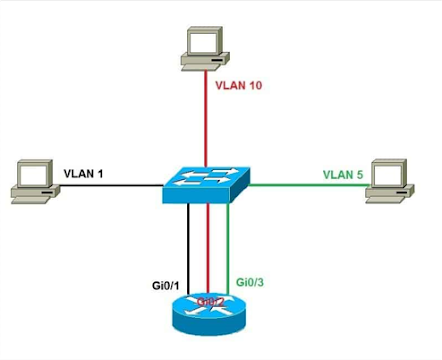Every VLAN has its own network and broadcast domain, which mean that the frame broadcasted into the network is switched only between ports within same VLAN. For interVLAN communications, and a layer 3 device (usually a router or layer 3 switch) is needed. Layer 3 device needs to have IP address in every VLAN and have connected route to each of those networks. The host in each network can be configured to use the router IP address as their default gateway.
Three option are
available for interVLAN routing:
1. Use a router, with
one router LAN port connected to switch for each VLAN. Since you need one
Ethernet port on your router to connect each VLAN, this option isn’t really
scalable and rarely used.
2. Use one router port
with trunking enabled on this. This is also called router on a stick
(ROAS) and enable all VLAN to commune over a single interface.
3. Use a Layer 3
switch, which performs both the switching and routing operations.








0 Comments